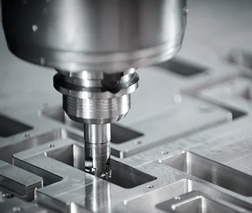Vacuum casting is an economical and efficient solution to casting for small batches of polyurethane plastic parts
What is vacuum casting

With many years of experience in vacuum forming and custom silicone molds, Brightstar can produce high-quality and inexpensive plastic parts with fast turnaround, which is very suitable for advanced prototypes, functional testing, concept verification and display demonstrations. Polyurethane casting parts can be manufactured from a few to hundreds of parts as needed.
Advantages of vacuum casting
Silicone molds are inexpensive
Cast polyvacuum parts are made from inexpensive molds without investing in expensive and time-consuming metal tools. This is a cost-effective way to make high-quality prototypes and small batches of parts.
Fast delivery
Vacuum casting has a short production cycle from mold making to finished product. Up to 50 functional -cast polyvacuum parts can be produced in 10 to 15 days.
Repeatability
Silicone molds can be reused approximately 20 times, which means that the same product can be produced 20 times.
Color can be added
Colored pigments can be mixed into the resin to make the product have a variety of color options.
Excellent surface finish
Due to the reduction of bubbles and voids inside the vacuum film, the material's density is increased, resulting in a tighter and better surface finish.

How vacuum casting works



Why cooperate with Brightstar's in custom vacuum casting services?
Application of vacuum casting parts
Our superior vacuum casting rapid prototyping examples







Materials for vacuum casting
Polyvacuum resin is a polymer with a wide range of properties and uses. Brightstar offers a variety of polyvacuum materials to suit your application, including Hei-Cast from Japan and Axson from France, while materials with certain properties similar to engineering production plastics, such as ABS, PMMA, PC, PP, PA, silicone rubber poxy and epoxy, polyvacuum, etc. -cast parts can range from transparent, translucent to colored, from soft rubber to hard plastic, and a variety of materials including impact resistance, high temperature resistance (130°C) or fire resistance (UL95-V0), glass-filled resins and silicones of varying hardness.

Quote Now to Start Your Vacuum Casting Project
Put your parts into vacuum casting production now




Vacuum Casting Technology Guide
FAQ about vacuum casting
The cost of vacuum casting depends on a variety of factors, including the complexity of the mold, the cost of the material, the equipment and labor required, etc. Generally, vacuum casting costs more than ordinary casting, but it is worth it in some applications because it can provide higher quality castings.
Ordinary casting may not completely remove bubbles from the material, resulting in defects on the surface of the casting. vacuum casting can effectively remove bubbles and improve the quality and details of the casting by performing it in a low-pressure environment.
vacuum casting is widely used in multiple industries, including:Automotive industry: used to make prototypes and certain functional parts. Medical industry: used to make precision medical devices and components. Aerospace: used to make lightweight, high-strength parts.Consumer products: used to make toys, electronic product housings, etc.
Grinding, polishing, painting or other surface treatments are performed as needed. For functional parts, performance testing and verification may be required.
Fast, short run production option for small batches of plastic prototype parts.
Blogs

